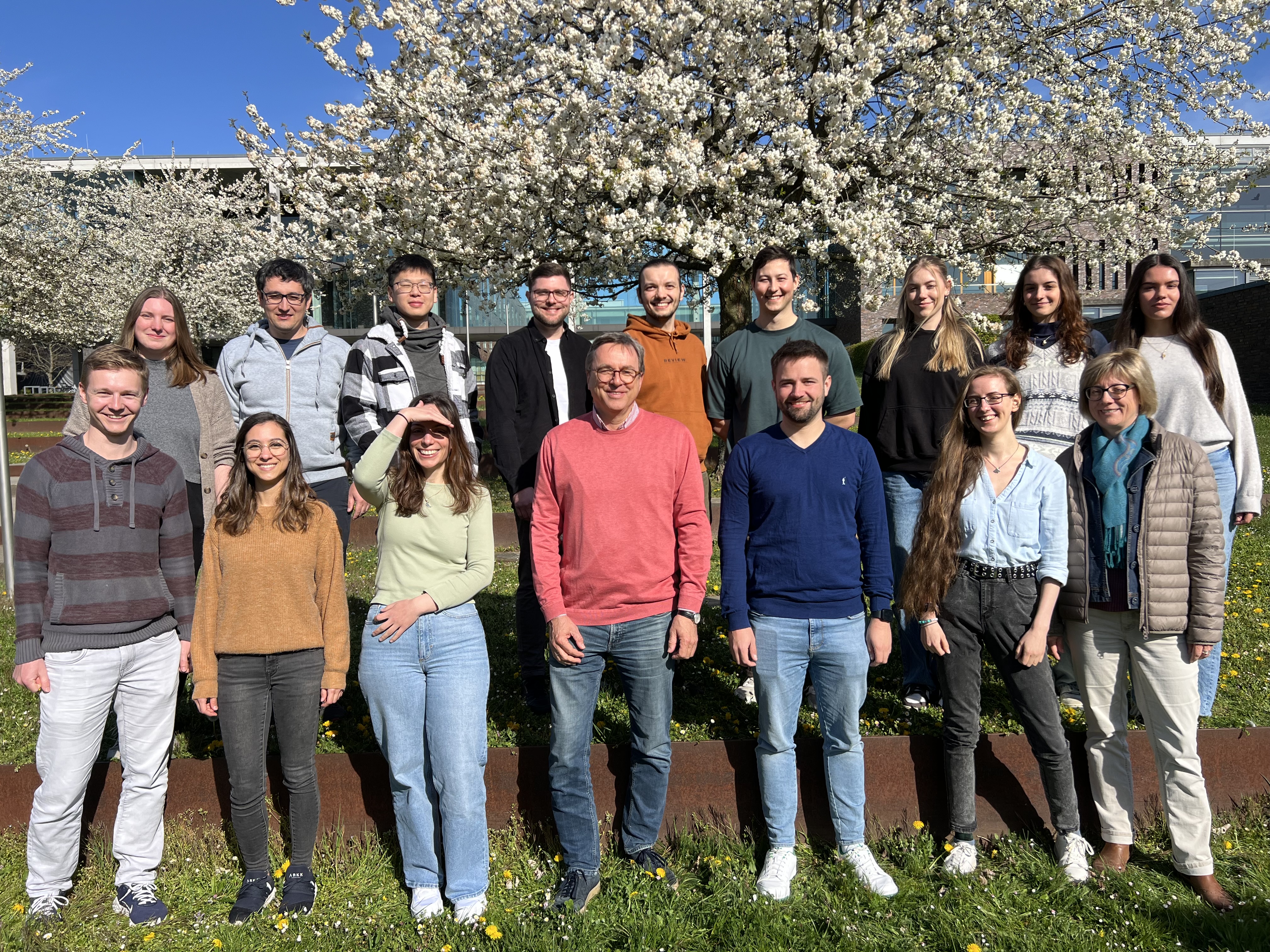






"Trapped Together: How a Second Phase Induces Extrinsic Self-Trapping Leading to Enhanced Emitting States in 2D Perovskites" in Chemistry of Materials
Two-dimensional (2D) lead halide (R2PbX4, with X = Br, Cl, and R = organic ammonium cation) perovskites (PSK) are promising materials for the generation of white light due to self-trapping events leading to broadband photoluminescence (PL). In the mixed-halide series NEA2Pb(Br1−nCln)4 (NEA = 2-naphthyl 2-ethylammonium), we systematically investigated defect effects on optical properties. We focused on Cl-rich samples, which showed enhanced broad emission, and compared the chloride-only component with two mixtures, n = 0.7, which exhibits one phase, and n = 0.5, including a small quantity of an additional Br-rich phase. We combined X-ray diffraction with steady-state and time-resolved optical studies and found prolonged PL and recombination lifetimes for n = 0.5 > 0.7 > 1, demonstrating the enhancing effect of defect-induced extrinsic self-trapping on emitting states.


"Visible-Light Photoswitchable Covalent Tetra-Ortho-Fluoro-Azobenzene Carbon Nanodot Hybrids for Optostimulation" in ChemPhotoChem
Carbon nanodots (CNDs) have attracted growing interest due to their potential applications in sensing, imaging, and optically controlled bio-applications. Herein, the covalent functionalization of citric acid/ethylenediamine-based CNDs with a tetra-ortho-fluoro-azobenzene derivative (F-Azo) is presented. This approach aims to integrate the intrinsic photoluminescence of CNDs with the reversible photoisomerization properties of F-Azos triggered by visible light. The CND-F-Azo hybrids are synthesized via a terminal carboxylic acid group located on the F-Azo, which can be attached via amide coupling to surface-accessible amines on the CNDs. The structural and optical characterization of the resulting hybrid material is performed using a variety of analytical and spectroscopic techniques, as well as computational analyses supporting the covalent linking between the molecular and nanomaterial components and the interactions existing between them. In order to assess the impact of functionalization on physicochemical properties, the hybrid is further analyzed with respect to zeta potential, lipophilicity, and cell viability using HEK-293 cell assays. To assess cellular uptake and intracellular localization, confocal fluorescence imaging is employed. This work contributes to the development of light-responsive nanomaterials with tailored surface properties, highlighting the potential of Azo-functionalized CNDs as multifunctional platforms for future in vitro and in vivo optostimulation applications.